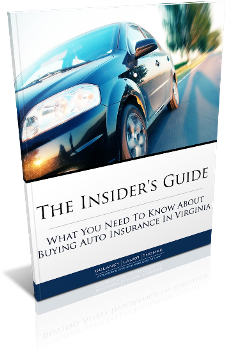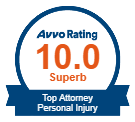If you know what a Sports Utility Vehicle (also known as an SUV) is, then you no doubt know about the dangers of rollovers. Rollover accidents are caused when a vehicle with a high center of gravity – like an SUV – takes a turn too sharply or corrects too much on the road and the vehicle rolls over onto its roof. This is a very dangerous type of accident and accounts for 35% of all vehicle occupant fatalities. The statistics for SUVs alone are even grimmer, as the occupant death rate for SUV rollovers jumps up to 59%.
Rollovers would obviously not be an issue if vehicles did not roll over in the first place, however, even with new vehicle stability control technology, these types of accidents are still occurring. One of the challenges for automobile makers is to ensure that a vehicle’s roof is strong enough to protect its occupants in a rollover accident. However, some manufacturers have claimed that roof strength has little to no bearing on occupant safety. This is an assertion challenged by the Insurance Institute for Highway Safety (IIHS) in a new report focusing on SUV rollover risks.
Roof strength – does it matter, or doesn’t it?
Two studies sponsored by automakers – one in 1995 and another in 2005 – found no relationship at all between roof strength and occupant safety in rollover accidents. What automakers often fail to mention when touting these statistics is that both studies included a wide variety of passenger vehicles – not just SUVs – and substantial differences in driver demographics and other factors that IIHS believes muddied the results.
The IIHS decided to run their own study of SUV roof strength using stricter parameters. They evaluated 11 midsize 4-door SUVs and subjected them to rollover tests similar to those run by the federal government. In order to make the test strictly about roof strength, IIHS chose SUV models that did not have stability control or side curtain airbags. The force needed to crush the roofs 2, 5, and 10 inches were measured for each model.
Researchers found that no matter how far the roof was crushed – 2, 5, or 10 inches – there was a consistent relationship between roof strength and occupant safety. The 2000-04 Nissan Xterra had the strongest roof of those tested, and the 1999-2004 Jeep Grand Cherokee had the weakest roof.
This study is important because the federal government is considering changing legislation that currently requires passenger vehicle roofs to withstand a force 1.5 times the weight of the vehicle before reaching 5 inches of crush. This requirement has been in effect since 1973 for cars and since 1994 for all passenger vehicles. The government has proposed increasing the roof crush requirement to 2.5 times vehicle weight. IIHS believes that increasing the roof crush requirement to this level would reduce the risk of serious and fatal injury in a rollover crash by 28%, and if roofs were strengthened even more, additional lives would be saved. It remains to be seen if the auto industry will agree with this conclusion or if it will try to find ways to refute the IIHS findings.
Electronic stability control – a true safety innovation
Electronic stability control is being touted as the latest and greatest safety innovation – and rightly so. IIHS estimates that electronic stability control (also known as ESC) reduces the risk of a fatal single-vehicle rollover by 69% for all passenger vehicles and 72% for SUVs. These are impressive statistics, and it is no wonder that the government was compelled to make ESC mandatory on all vehicles.
ESC systems use computer-controlled braking of individual wheels, which helps the driver maintain control in situations where a vehicle would ordinarily leave the road or skid out of control. ESC is especially effective on SUVs because of their higher center of gravity and greater weight. NHTSA believes that ESC will be effective in reducing single-vehicle crashes, which is when most rollovers occur.
The estimated safety improvements from ESC are impressive. According to NHTSA estimates, ESC may prevent 71 percent of the passenger car rollovers and 84 percent of the SUV rollovers that would otherwise occur in single-vehicle crashes. NHTSA estimates that once all light vehicles are equipped with ESC it would save 5,300 to 9,600 lives and prevent 156,000 to 238,000 injuries in all types of crashes annually. Because of the striking number of lives that could be saved and accidents prevented, NHTSA has mandated that ESC be included in all light passenger vehicles by the model year 2012.
Side curtain airbags bring additional safety to vehicle cabins
Another great safety innovation that is especially beneficial to SUV drivers is the addition of side curtain airbags. These airbags protect driver and passenger heads during a crash, and can even protect passengers from injury and ejection during a rollover. IIHS believes that side curtain airbags will reduce the risk of death from rollover accidents even further. The federal government has mandated that side curtain airbags be installed in all new vehicles as of 2013.
It can’t be said enough: wear your seat belt
It is very simple. Wearing your seat belt reduces your risk of death during a rollover accident by 75%. With numbers like that, it is a wonder that some people have not yet gotten the message that the best way to keep themselves safe is to buckle up each and every time they get in the car.
Drivers should feel much better about the newest generation of SUVs, as the introduction of electronic stability control and side curtain airbags is making SUV travel much safer. In this regard, manufacturers have made good progress towards protecting drivers and passengers from rollover accidents. What will be telling is if they embrace the call to improve safety further by making the roofs of their SUVs strong enough to save even more lives in rollover crashes.
Don’t let an auto accident ruin your life. If you’ve been seriously injured in an auto accident because of somebody else’s negligence, then you deserve compensation for your injuries and your suffering.
Please contact Dulaney, Lauer & Thomas today and let us work with you for the compensation that you deserve.














